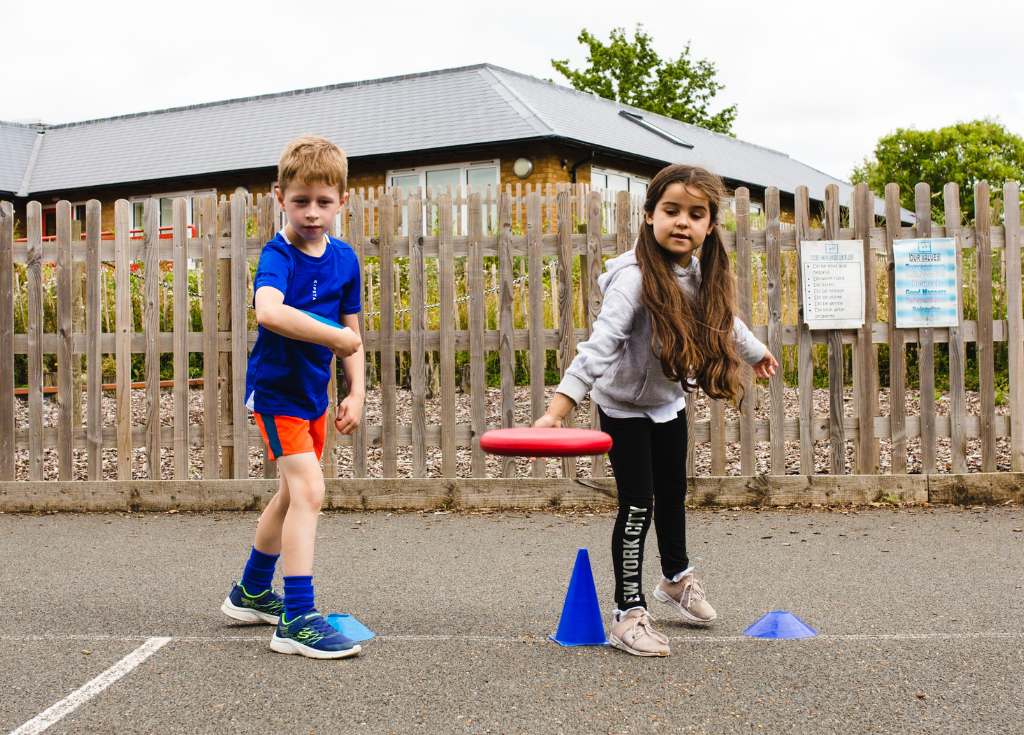5 New Sports Activities For Primary Schools to Offer this Summer
One of the hallmarks of a good PE curriculum is variety.
Whilst expert subject leadership, pace, good planning, use of space and child progress are essential ingredients, variety of sporting experiences is the lynchpin of a successful physical education strategy.
However, it’s easy for schools to fall into a rut of offering the same sports year on year, especially if the equipment cupboard is well resourced to cope with netball or rugby in winter and rounders or cricket in summer.
Teachers can assume that adding new sports and games to the school curriculum means a significant investment in new equipment and the development of time-consuming lesson plans.
It needn’t require a large financial investment. Expanding the sporting repertoire offers a wider range of sports that will help to engage – and improve the outlook for – a larger number of students.

How to choose good sports activities to vary your PE lessons
Not all primary age kids enjoy competitive sport.
As such, games should be varied, inclusive and promote a range of physical activity. Aim for a blend of aerobic exercises to raise heart rate along with endurance-building activities to strengthen muscles and bones.
Inactive time should be kept to a minimum, and, even though you’re outside the classroom, there should be clear learning objectives so children can understand the importance of every sport they play.
Explore a mixture of team games and individual sports, appealing to different abilities and preferences.
There should be plenty of opportunities to exercise, whether ‘in play’ or whilst carrying out drills. And if you want a favourite sport to remain on the lesson plan, consider reframing the teaching approach so there’s a focus on fun!
New sports activities for primary school PE classes
1. Mini basketball
Mini-basketball incorporates fundamental movement skills requiring players to jump, pivot and twist, as well as explode into a sprint to create space or receive a pass. In short, it’s superb for heart health, speed and agility, and releases endorphins which promote happiness and boost mood.
The game promotes strength and muscular endurance as well as developing concentration and self-discipline. Plus, being a fun team sport it’s excellent for improving communication and social skills.
Mini-basketball is basketball for primary school children and is relatively easy to implement in any school, even if there’s no dedicated basketball court or nets.

Using playground dividers, mark out a court and arrange the children into teams of 5.
Select two teams to compete; each team chooses an end in which to score and an end to defend. The children not involved in the match should work with a partner to practise passing and bouncing the ball to one another.
Encourage the children to move the ball across the court by passing or bouncing it to their teammates before attempting a shot.
Learning to bounce and dribble the ball is excellent for hand-eye coordination – although it can be a little tricky for a younger child to master.
Adjustable netball goals are ideal to use as basketball nets, as long as they can be adapted to suit the height of the players. Make sure there are enough balls for one between two and that balls are fully inflated before the session so that active lesson time can be maximised.
2. Baseball
Baseball is growing in popularity in the UK and for good reason.
It teaches young children an enormous amount of valuable lessons. As well as developing gross motor skills thanks to throwing, catching, batting and running, it is great for teaching mental resilience too. Missing the ball, struggling to swing the bat and coping with the disappointment of getting struck out reiterates the need to practise, be determined and keep trying.
As a team sport, baseball is great for teaching teamwork, especially since every player on the pitch plays a role. What’s also intriguing is that it nurtures patience, focus and concentration, because children are expected to wait their turn or stay focused in the game even if they are not batting or running bases.
The baseball bat is slightly different in shape and length to the rounders bat, so it’s worth investing in a couple if possible. However, you can still use rounders balls and bases to keep costs down.
Try replacing rounders with baseball, using it as an opportunity to profile a different fun sport and expand the kids’ sporting knowledge.
3. Summer circuits
Summer circuits are essentially a series of fun games and agility exercises laid out in ‘stations’ that children rotate around.
It’s excellent for summer months because it enables teachers to get kids outside and experiment with a mixture of apparatus or equipment, some of which could even be natural (think trim trail or tree swing).
Begin by considering the class size. You should aim to develop enough ‘stations’ to keep a small number of children participating in each activity at one time. Similarly, evaluate the ability and interests of your pupils and tailor a range of activities to suit everyone in the class. This is one of the greatest opportunities to maximise inclusivity.

Secondly, raid the equipment cupboard! See this as an opportunity to utilise resources that are routinely neglected, these could be:
Plus, you can integrate equipment from other sports; think football goals for shooting practise, netball hoops for throwing and accuracy and a gymnastics bench or beam to improve balance while walking in a straight line.
Incorporate shuttle runs, table tennis, throwing a water balloon into a bucket; the opportunities are endless and are easily adapted to suit kids of all ages and abilities. Find out what the children enjoy and what makes them tick – this is crucial in unlocking sporting apathy and developing activities for future physical education lessons.
For the older ones, incorporate simple races such as running with a hula hoop or being the first child across the finish line with a beanbag. It will suit students who thrive in competitive sport activities but equally, there are plenty of opportunities for children who shy away from team sports to participate.
After all, it’s about fun and camaraderie. Plus, crucially, it’s an opportunity for kids to find a sport or activity they enjoy, which could lead them onto a pathway into a local gymnastics club or athletics team. Or perhaps, if nothing more, the kids might replicate a similar activity with family members or parents in the garden over the summer holidays.
4. Athletics
It is claimed that athletics at school is accessible. But is it really?
The fastest and strongest children thrive on the competition of races but it can be unrewarding or off-putting for children with less practice.
Some schools are taking the emphasis off winning and focusing instead on progress. Students are encouraged to compete only with themselves by tracking their times or scores across the term. Any improvement, however incremental, is celebrated. Everyone can enjoy a sense of achievement and no one gets overlooked, no matter their age or ability.
Use athletics as a shared exploration of movement, strength and agility. Running, jumping and throwing underpin every sport, so they are important skills to master.
The beauty of athletics at primary school is that the whole class acts as one team, making it especially good for kids who shy away from competitive team sports.

5. Handball
Handball is an attractive proposition for schools looking to diversify their sports offering; particularly where apathy may exist towards more traditional sports such as football, netball or rugby.
Handball is played in over 180 countries by over 19 million people and is most popular in parts of northern Europe and America. Now handball is one of the fastest-growing and up-and-coming team sports in the UK.
For young kids, handball promotes movement, throwing and catching skills, as well as developing teamwork and communication. It also teaches resilience, problem-solving and competition. Add to that the aerobic benefits of a high-intensity sport and it’s a brilliant sport for promoting heart health.
As a sport which escapes traditional gender stereotypes, handball is especially good for presenting a clean slate for kids who are disillusioned with existing PE activities.

Boost physical education at your school
Playing a range of fun games and sports at primary school will increase a child’s likelihood of living an active adult life.
An easy way to incorporate different sports or shake up PE lessons is to engage the services of a professional external supplier, who specialises in delivering high-quality PE provision.
At Premier Education we have over 20 years of experience in delivering physical activity to thousands of primary schools all over the country.
Find out how we can boost the sporting opportunities at your school.
Making the most out of PE planning resources
PE planning can be transformed with Pepé, Premier Education’s innovative online platform. More than just lesson plans, Pepé offers insights into PESSPA across your school, helping you measure progress, identify gaps, and optimise Sport Premium funding. It simplifies planning, monitoring, and analysis, ensuring your PE provision is effective and pupil-focused.
Ready to energise your PE lessons? Contact us for a Pepé demo and see how it can make teaching PE as enjoyable as it is impactful!

